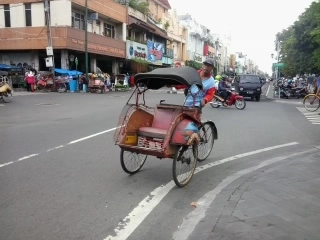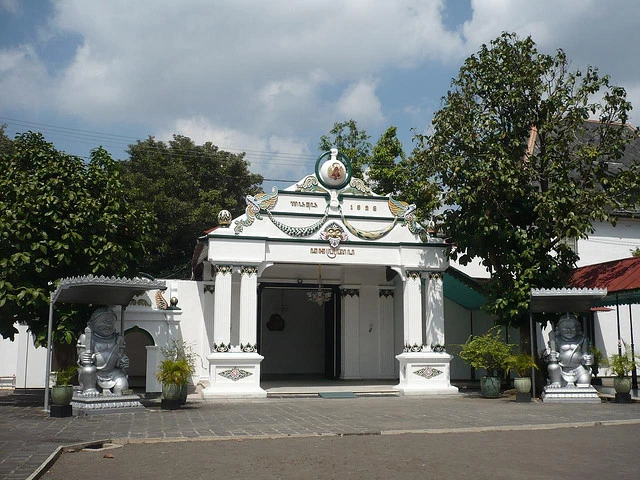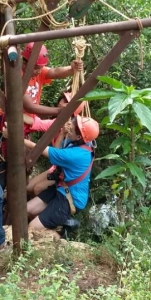 Yogyakarta as the main tourist destination in Indonesia, called also in another name Jogja or Yogya, and Jogjakarta, is one of the main tourist destination in Indonesia, where you can visit the most important tourist destination/ attractions in Yogyakarta/Jogja such as: Borobudur Buddhist temple in the world, Volcano Merapi, Sultan Palace, Taman Sariand Prambanan The Hindu temple where the most spectacular Ramayana Ballet held. The followed information describing the tourist destinations or tourist attractions in Yogyakarta/Jogja and beyond. Learn it to help you visit easier Yogyakarta/ Jogja
Yogyakarta as the main tourist destination in Indonesia, called also in another name Jogja or Yogya, and Jogjakarta, is one of the main tourist destination in Indonesia, where you can visit the most important tourist destination/ attractions in Yogyakarta/Jogja such as: Borobudur Buddhist temple in the world, Volcano Merapi, Sultan Palace, Taman Sariand Prambanan The Hindu temple where the most spectacular Ramayana Ballet held. The followed information describing the tourist destinations or tourist attractions in Yogyakarta/Jogja and beyond. Learn it to help you visit easier Yogyakarta/ Jogja
Yogyakarta/Jogjakarta info general
Jogjakarta known as Jogja is flanked by majestic Mount Merapi and the immense Indian Ocean. With an area of 3,185 sq km, the special regions of Jogjakarta is of the most densely populated regions in the world, and this has been the case for very long time. Divided into three separate zones, the eastern and western with its dry limestone mountain ranges and the center arable land for cultivation, Jogja is best seen during the season from Maya to October. Temperatures range between extremes of 18 C and 35 c, with the average lying between 26 C and 28C. Average humidity is 74 5 between extremes of 65 % and 85%. Jogja lies approximately 7 South of the Equator and is bathed in tropical climate, the atmosphere is hot and humid The wealth and variety that this City has in store is one of many aspects that makes Jogjakarta a city of endless wonder and fascination. The Airport is 8 km north east of the city center .
History of the city of Yogyakarta/Jogjakarta
 Lies 18 miles (29km) inland from the southern Java coast and near Mount Merapi (9,551 feet /2,911m). in 7thcenturythe locality formed part of the Buddhist kingdom of sailendras, which was contemporaneous with the Srivijaya Empire of Palembang (Sumatra). It was probably included in the later Kediri and Singosari Kingdom ruled the region successively. At the end of the 13th century the Hindu Majapahit Empire rose un eastern Java, an what is now Jogja passed under its rule.
Lies 18 miles (29km) inland from the southern Java coast and near Mount Merapi (9,551 feet /2,911m). in 7thcenturythe locality formed part of the Buddhist kingdom of sailendras, which was contemporaneous with the Srivijaya Empire of Palembang (Sumatra). It was probably included in the later Kediri and Singosari Kingdom ruled the region successively. At the end of the 13th century the Hindu Majapahit Empire rose un eastern Java, an what is now Jogja passed under its rule.
In the early 16th century, central Java had two Muslim Kingdoms, Demak and Pajang,which were incorporated into the powerful Muslim kingdom of Mataram by Senapati Ingalaga (reigned 1584-1601). The Dutch became established in the region in 1602. After numerous conflicts, Mataram subdued the state of Surabaya in eastern Java in 1625 and gained general supremacy in the territory. In rebellion against Dutch intervention in Javanese politics, Sultan Hamungkubuwono I moved his court from Kota Gede to Jogjakarta. In Mataran in 1755 and renamed the town Jogja. The British captured Jogja in1811,and Sultan Hamengkubuwana II was deposed and exiled. In 1816 the Dutch repossesed the island of Java and 1830 Dutch colonial rule was firmly established in the sultanate. After the period of Japanese occupation during World War II, the Republic Indonesia was formed . The national capital was removed to Jogja when the Dutch occupied Jakarta in 1946, it was moved back to Jakarta in 1950 upon independence, an Jogja was given the status of a special district in the Republic of Indonesia.



